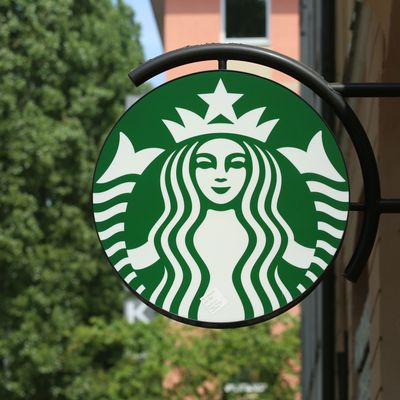
On May 29, more than 8,000 Starbucks nationwide closed for mandatory “racial-bias education” after a Philadelphia store manager sparked outrage for calling the cops on two black men who asked to use the bathroom before placing an order. For four hours, approximately 175,000 employees watched informational videos about the history of workplace discrimination, spoke to their co-workers about their personal experiences of bias, and filled out notebooks containing questions related to race and privilege.
In the lead-up to Tuesday, Starbucks’s strategy was met with praise and skepticism, as many wondered whether a single day of training could really have an effect. So how did it go? To find out, we asked four Starbucks employees around the country about their experiences.
California: “I kept thinking, ‘I wish this were the job of our nation’s educators.’”
They showed a very well-produced video about the history of denying service based on race that was hosted by Common! Then they broke down the science of bias or prejudice against differences and had us think about the times we felt unwelcome. I kept thinking, “I wish this were the job of our nation’s educators.”
I do think Starbucks has good intentions with what they’re trying to do, and I think the training will combat bias. A lot of my co-workers actually shed tears and shared parts of their lives with us. And Starbucks clearly has the clout and resources to send a giant message with the optimistic hopes that it will permeate the nation.
New Jersey: “I’m hesitant to praise Starbucks as trailblazing fighters against racial bias.”
The literature and media provided by the company for the program was decently informative, but what I thought was the most effective was that the program allowed for an environment that felt comfortable to discuss our differences. I like to consider myself as a more socially aware person, but there is a lot that I, as a white woman, can never truly understand. Hearing testimony from some of my co-workers that are people of color was essential to the program. However, a few of my co-workers and I found the terminology “color brave” that was used to be strange. It was meant to serve as an antithesis to the idea of being “colorblind” regarding race, but we felt that it was an offensive way to approach viewing other races.
Although I found the training to be an overall positive and well-constructed experience, I’m hesitant to praise Starbucks as trailblazing fighters against racial bias. A few years back, there was a controversy around the company’s campaign called “Race Together,” which was criticized for being a “slacktivist” approach to promoting racial inclusion. Since this less-talked-about controversy did not prompt such training, I question the company’s motives this time.
Florida: “The training was a waste of four hours.”
I am half Mexican and grew up in poverty, so diversity, bias, and judgment are things I’m familiar with. So for me, the training seemed very repetitive. It talked about the bias and racism towards mostly black people, but others as well, even though there are laws that should be preventing this.
The training mostly wanted to remind us that each person is different and unique — that we should embrace these differences. They touched on the issues that brought this training about, but they also mentioned that this was needed even before then because America itself has an issue with embracing diversity, and that as a large company, they are obligated to treat everyone the same no matter what.
Something that bothered me about the training was that they didn’t really give specifics of how to approach certain situations, or how they planned as a company to include everyone, except that everyone is a customer that walks into our store, even if they don’t buy anything. Another thing that upset me was that they expect us to always be on and be welcoming even when customers don’t treat us with respect and dignity in return. There have been instances in certain stores where I have worked where customers have threatened partners or even yelled at partners based on their race, religion, or sexual orientation, and oftentimes higher-ups don’t stand up for that partner. In my opinion, the training was a waste of four hours.
Minnesota: “A lot of the baristas at my store hoped it would touch base on other POC and marginalized people.”
My specific store is fortunate enough to be very diverse in not only color, but also in regards to religion, gender, and orientation. The vast majority of our regular customers are Somalian. When you come to work at our store, if you’ve ever had preconceived notions or whatever beliefs about Somalians or Muslims, you’re forced to confront them.
Starbucks’ training was blanketed to every store, instead of being tailored to different demographics. I totally get that creating training sessions for each store would have been very time consuming, but there are probably stores in America where the majority — if not all — baristas are POC. That they had to sit through a four-hour training on “how not to be racist” is kind of ridiculous.
The training only really covered how to not be racist towards African-Americans. Don’t get me wrong, that needed to be addressed, but a lot of the baristas at my store hoped it would touch base on other forms of discrimination toward POC and marginalized people. Starbucks did say near the end of the training that they are planning on continuing these trainings. We hope to see more intersectionality in the future.




